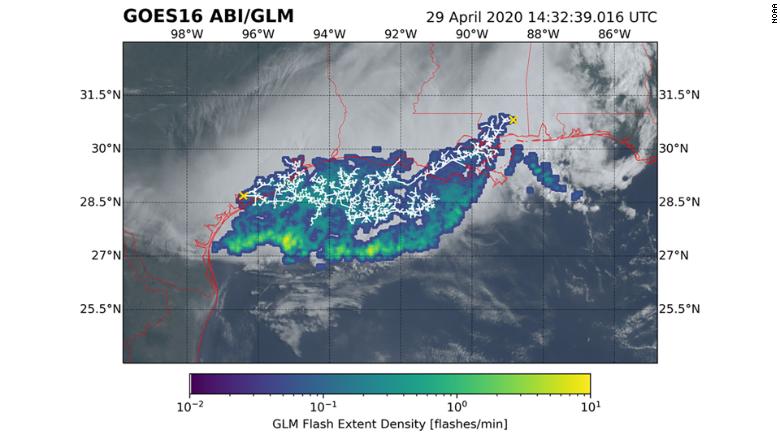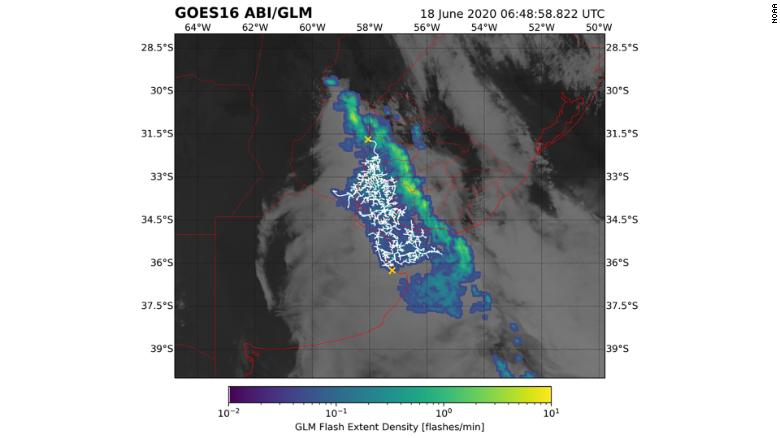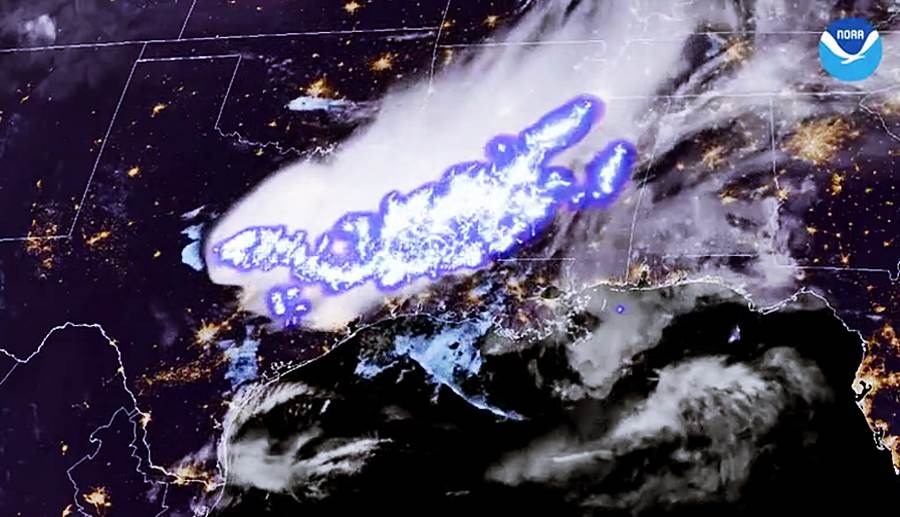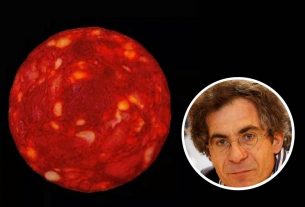Wed 02 February 2022:
The World Meteorological Organization (WMO) has recorded two new world records for megaflashes of lightning, one for the longest distance of a single flash in North America and the other for the longest duration in South America.
On April 29, 2020, a record-breaking lightning bolt spanned 768 kilometers (477.2 miles) across sections of the southern United States, according to the organization.
It’s the same distance between New York City and Columbus, Ohio in the United States, or London and Hamburg in Germany.

On June 18, 2020, a flash that evolved continuously through a thunderstorm over Uruguay and northern Argentina set a new record for the longest-duration lightning strike at 17.1 seconds.
“These are extraordinary records from single lightning flash events,” said Randall Cerveny, the rapporteur of Weather and Climate Extremes for the WMO. “It is likely that even greater extremes still exist and that we will be able to observe them as lightning detection technology improves.”

WMO Secretary-General Petteri Taalas also said that the findings highlight “important public lightning safety concerns for electrified clouds where flashes can travel extremely large distances.”
Only lightning-safe locations are substantial buildings that have wiring and plumbing, and a fully enclosed metal-topped vehicle, said Ron Holle, a lightening specialist and committee member.
“If lightning is within 10 km (6.2 mi) as found with reliable lightning data, go to the lightning safe building or vehicle.
“As these extreme cases show, lightning can arrive within seconds over a long distance, but they are embedded within larger thunderstorms, so be aware,” Holle warned.
With new advances in technology, lightning scientists have been able to use Geostationary Lightning Mappers (GLM’s) on satellites orbiting in space to collect a larger scale of lightning data such as the new megaflash lightning records.
SOURCE: INDEPENDENT PRESS AND NEWS AGENCIES
_____________________________________________________________________________________________________________
FOLLOW INDEPENDENT PRESS:
TWITTER (CLICK HERE)
https://twitter.com/IpIndependent
FACEBOOK (CLICK HERE)
https://web.facebook.com/ipindependent
Think your friends would be interested? Share this story!





